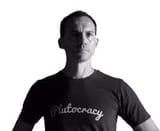Interview: Baden Pailthorpe's Pattern Recognition
GameScenes is conducting a series of interviews with artists, critics, curators, and gallery owners operating in the field of Game Art, as part of an ongoing investigation of the social history of this fascinating artworld. Our goal is to illustrate the genesis and evolution of a phenomenon that changed the way game-based art is being created, experienced, and discussed today.
The conversation between Baden Pailthorpe and Mathias Jansson took place via email in September 2012.
...But before we dive in the verabl exchange, I have a confession to make. This is Matteo Bittanti speaking. Here at GameScenes, we are deeply obsessed with Baden Pailthorpe. A simple search on the site, will return countless posts. There is something truly Australian - and therefore truly cutting edge - about Pailthorpe's Game Art projects. The official, institutional "bio" on his website does not adequately express the originality of his work, the uniqueness of his vision. I will list it anyway for those who are not familiar with his opus. My personal recommendation? Spend some quality time on his website. It's a mind-bending experience.
”Baden Pailthorpe (b. 1984) is an Australian media artist, writer and curator. His work engages with the political, cultural and conceptual potential of technologies in their most diverse forms, often through the appropriation, misuse and manipulation of cultural content and technological artefacts. His most recent work has been focused on the politics and aesthetics of military technologies, including simulators, cinema and video games.” (from the artist's homepage)
GameScenes: When did your interest in videogame begin and when did you decide to use them as "raw material" to create art, so to speak?
Baden Pailthorpe: As a child of the 80s, I grew up playing video games from a young age. My father is a computational physicist, so I spent a lot of time hanging out in his computer labs and playing on simulators. I didn't play any games for a long time after I finished high school and I only came back to them once I had already developed an art practice. So when I rediscovered games as an artist, it seemed natural to try to manipulate them and see what happens.
GameScenes: You are a prolific machinima maker. What are you your favorite games and tools? Why?
Baden Pailthorpe: I have been focussed on war simulators and FPS mainly. This is predominantly for the political nature of these games. Most recently I've been interested in simulators like ARMA, which allow for a lot of interventions through their editing features.
GameScenes: Repetitions and patterns recur in many of your works, but I am specifically thinking about your "Formation" series. What do you find so fascinating, or perhaps, reassuring, in the return-of-the-same?
Baden Pailthorpe: The patterns in the Formation series that you refer to were discovered by chance. I was intrigued by this phenomenon that was essentially produced by ordering a group of soldiers to do the most simple of actions: walk. In such a complex system used for war training it was quite stunning to find such a poetic glitch. What is interesting in these patterns is that despite being a kind of political action against the game (simply walking instead of creating violence), the patterns that emerge are tied directly to military aesthetics and vocabularies of uniformity, camouflage, repetition and discipline.
GameScenes: Many of your recent works focus on the politics and aesthetics of military technology and the conflation between simulations, cinema, and video games. How can an FPS game be used to make a political statement?
Baden Pailthorpe: I am always interested in teasing out subversive meanings from within systems built for violence. The reach of the Military-Industrial-Entertainment Complex in popular culture was highlighted in detail by James Der Derian and others. FPS games and other pro-military cultural objects actively promote conservative political postures, so they are loaded with material to 'play' with. The Formation series is a good example of how such games can be used to create political works.
)
.GameScenes: The Australian Game Art scene appears to be very lively. What is your personal take on the subject?
Baden Pailthorpe: Only recently has my work involving games been funded. I think there are quite separate areas for game art within the video game community. Scholarly interest in video games in Australia has expanded quite rapidly, but I'm not so sure about game art. Mark McCarthy was one on my first encounters with Australian game art. The establishment seems to be opening up to new media in general. In 2011, local artists David Haines and Joyce Hinterding, won a prestigious new media art prize with a work called The Outlands, which used the Unreal Tournament's game engine. It seems that when established artists use games it is perhaps more acceptable for institutions, otherwise game art can be confined to niche artist run spaces and festivals.
Text: Mathias Jansson
Editing: Matteo Bittanti
LINK:Features: Interview: Game Artword's Contemporary Practitioneers
